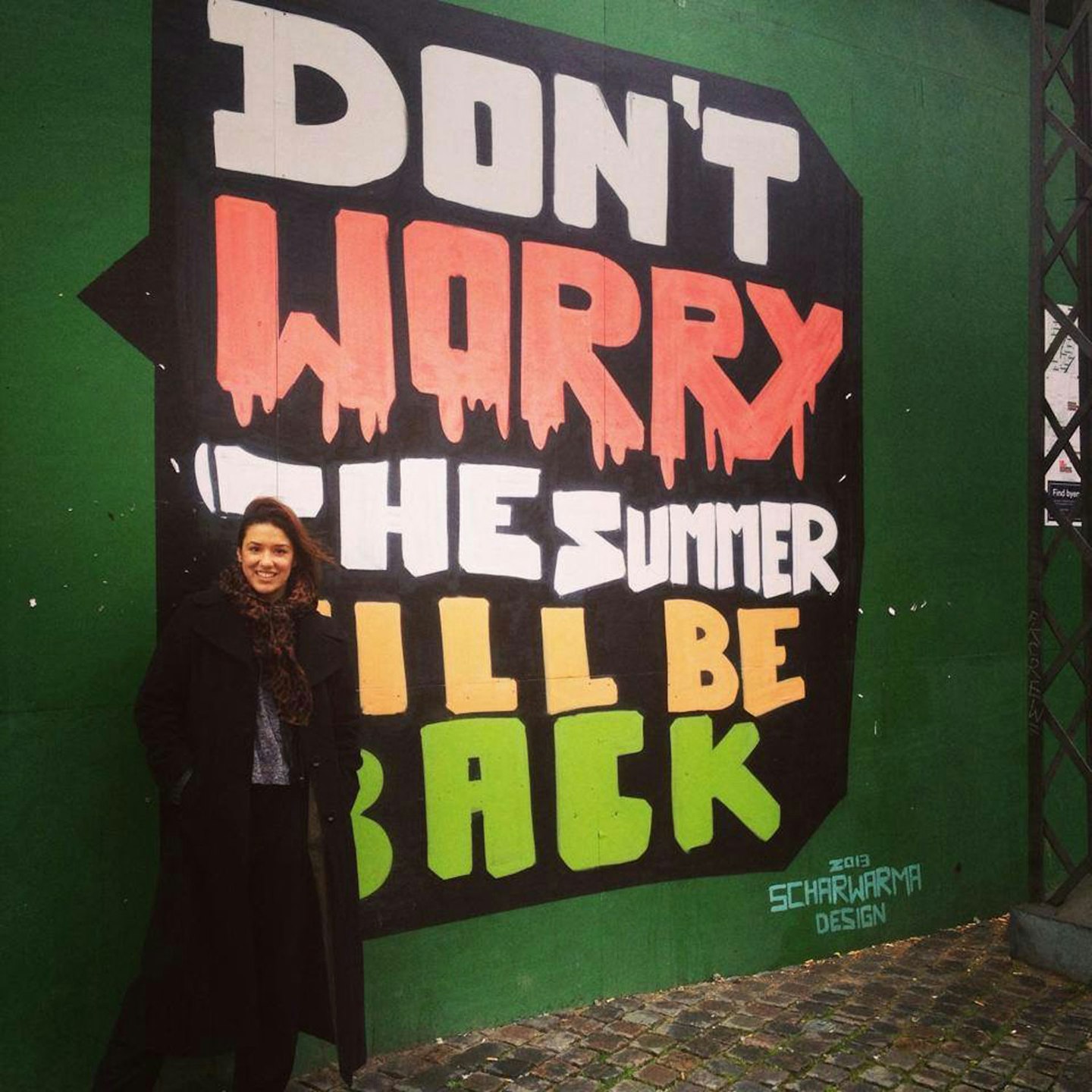More than two million people in the UK have been diagnosed with Seasonal Affective Disorder. Writer Hannah Bass on how she recognised she wasn't just sad about winter, but was SAD...
When people ask me why I moved to Dubai, it feels silly saying it was because I couldn’t hack the British winter. But it’s true. For as long as I can remember, winter has been synonymous with unshakeable sadness, with a tiredness infecting the very marrow of my bones, with a sense of hopelessness as bleak as the weather forecast and as dark as the shortening days.
For most of my life, I thought that was normal. I mean, everyone gets a bit sad during the winter, don’t they? But one November morning two years ago, I woke up and just couldn’t get out of bed.
I phoned into work sick. Feigning a cold sounded better than, “Sorry, I can’t come in today – I’m depressed about the weather.”
But I really was sick. That’s the only way I can describe it - my body was heavy with exhaustion, and the thought of forcing myself into the grey damp outside made me feel as though there were hands around my throat, squeezing and squeezing until I couldn’t breathe. The feeling was familiar from episodes of depression I’d suffered before, only I suddenly knew with complete conviction that if only the sun were shining, I’d be ok.
Finally, a friend persuaded me to see a doctor. Turns out, I wasn’t just sad about the winter; I was SAD. And I wasn’t alone – a 2014 study, commissioned by The Weather Channel and YouGov, found that 29 per cent of British adults experience symptoms of Seasonal Affective Disorder (SAD), eight per cent suffering acute SAD.
The medical profession has yet to agree on the precise causes of SAD, but it’s generally accepted to be caused by the lack of light. Light deprivation causes the body to produce more melatonin, one of the hormones responsible for making us feel sleepy. At the same time, perpetual darkness also causes a drop in serotonin, a hormone that helps regulate mood.
“SAD is characterised as a mood disorder, and essentially a depressive disorder,” says psychotherapist Ross Addison. The symptoms, he explains, are similar to depression. “You feel fatigued, you lose interest in things, you become irritable, more prone to frustration. You’ll generally have a lack of motivation to do things – a lot of people even lose the motivation to get out of bed,” he says. “It creates a negative cycle: you want to isolate yourself and stay at home, but when you do that, you stop giving yourself opportunities to enjoy the things that could make you happier.”

The good news is that, with a little support (and a lot of willpower), there are ways to ease the winter blues. Partly because I’d suffered from other mental health problems before, I was described an SSRI anti-depressant (in most cases of SAD, a course of Cognitive Behavioural Therapy is preferable to medication) that helped take the edge off just enough for me to get on with day to day life. Self-care is essential: I used to have an emergency action plan of simple pleasures and self-help steps tacked up on my bedroom wall (and covered in cat stickers, because that always helps) reminding me to take a walk outdoors every lunch break, to schedule one gentle sociable activity in every weekend, even to do mundane things like shower and moisturise every day. And at the bottom I’d written, “This, too, shall pass.”
It’s only since moving abroad that I’ve truly realised the extent of my SAD. Even after my diagnosis, there was a part of me that felt – like, I’m sure, a lot of people out there – that it wasn’t a ‘real’ illness. I still feel like a bit of a wimp, explaining that the number one factor that drove me to Dubai was my desperation to escape the dark British winter. But writing this on my balcony, with a warm breeze on my face after a weekend outdoors in the sunshine (sorry to gloat…) I feel like an entirely different person to the woman that couldn’t get out of bed two Novembers ago.
Of course I still go through ups and downs here – if anything, my work life is more stressful, and then there’s the instability and isolation of living abroad to deal with – and yet my energy levels are consistently higher and, ultimately, my baseline mood is just much less sad.
How to recognise Seasonal Affective Disorder
How can you tell if you’re suffering from SAD or if you’re just, well, sad? “Because it’s a new concept, it’s not something that mental health professionals will gravitate towards diagnosing,” says psychotherapist Ross Addison. “It’s very tricky to diagnose because you need to isolate the weather from other factors that might be contributing to your low mood, but it’s all about observation.
“If your low mood persists for three months, then you may meet the criteria for a mood disorder or depression. To try to identify whether it’s SAD, I’d suggest monitoring how your mood changes during the summer months, or on sunnier days during winter. It’s also unlikely that you would just develop SAD suddenly one winter at, say, 25 years old, unless there’s been another big contributing factor such as a death or a breakup. So try to remember how your mood has been affected in previous years.” Indeed, in order to get a diagnosis your GP will probably ask you whether you’ve experienced SAD symptoms for two or more winters in a row.
Treatment for Seasonal Affective Disorder
Addison says the most important tool you can use is ‘behavioural activation’ – that’s essentially therapist speak for making yourself do the everyday things you would normally enjoy, the outcome being that it can often naturally lift your mood. He recommends making a “self-help kit,” rather like my cat sticker-covered poster since, “when you’re suffering from SAD, you won’t instinctively do the things that will make you feel better – you need reminding.”
Addison also recommends Cognitive Behavioural Therapy (CBT), which is available on the NHS and normally takes no more than eight to 12 sessions to have a real impact. But, he says, it doesn’t even need to be carried out by a mental health professional, necessarily: there are plenty of CBT self-help guides for mood disorders available online.
Clinical evidence for the effectiveness of SAD lamps is as yet inconclusive, but anecdotally they seem to help (author’s note: they helped me!). Essentially a large, bright light box, they simulate the effect of daylight and should be used for at least 30 minutes each morning.
Exercise feels like a struggle, but it’s worth it – your body and mind will both benefit from the endorphins (plus the possible sliver of sunshine on the walk to the gym).
If all else fails, move to Dubai! Just kidding (kind of). But seriously, booking a winter holiday somewhere sunny can help keep your spirits up. And make sure that on those rare bright winter days, you make the most of the sun and get outdoors!
